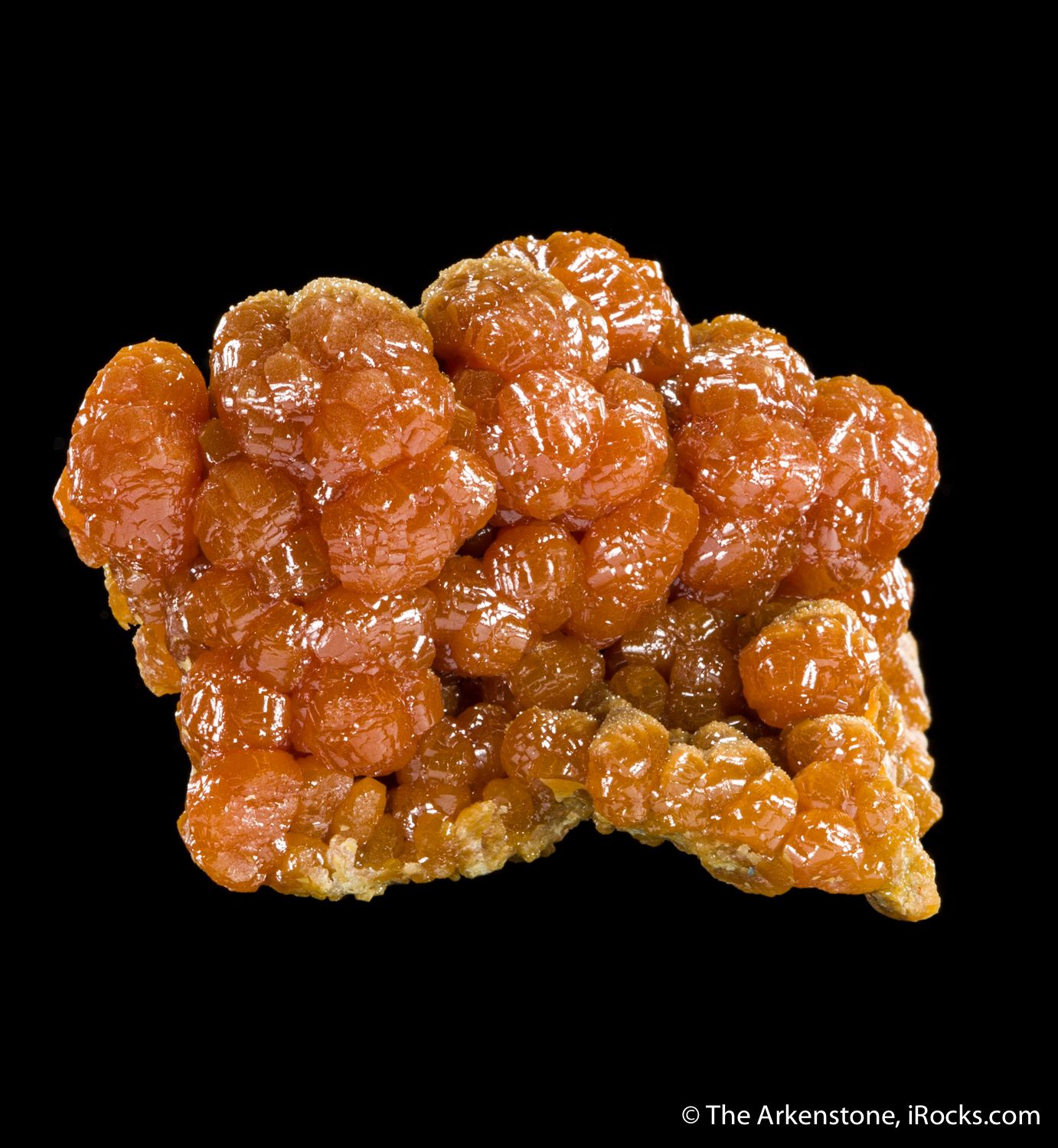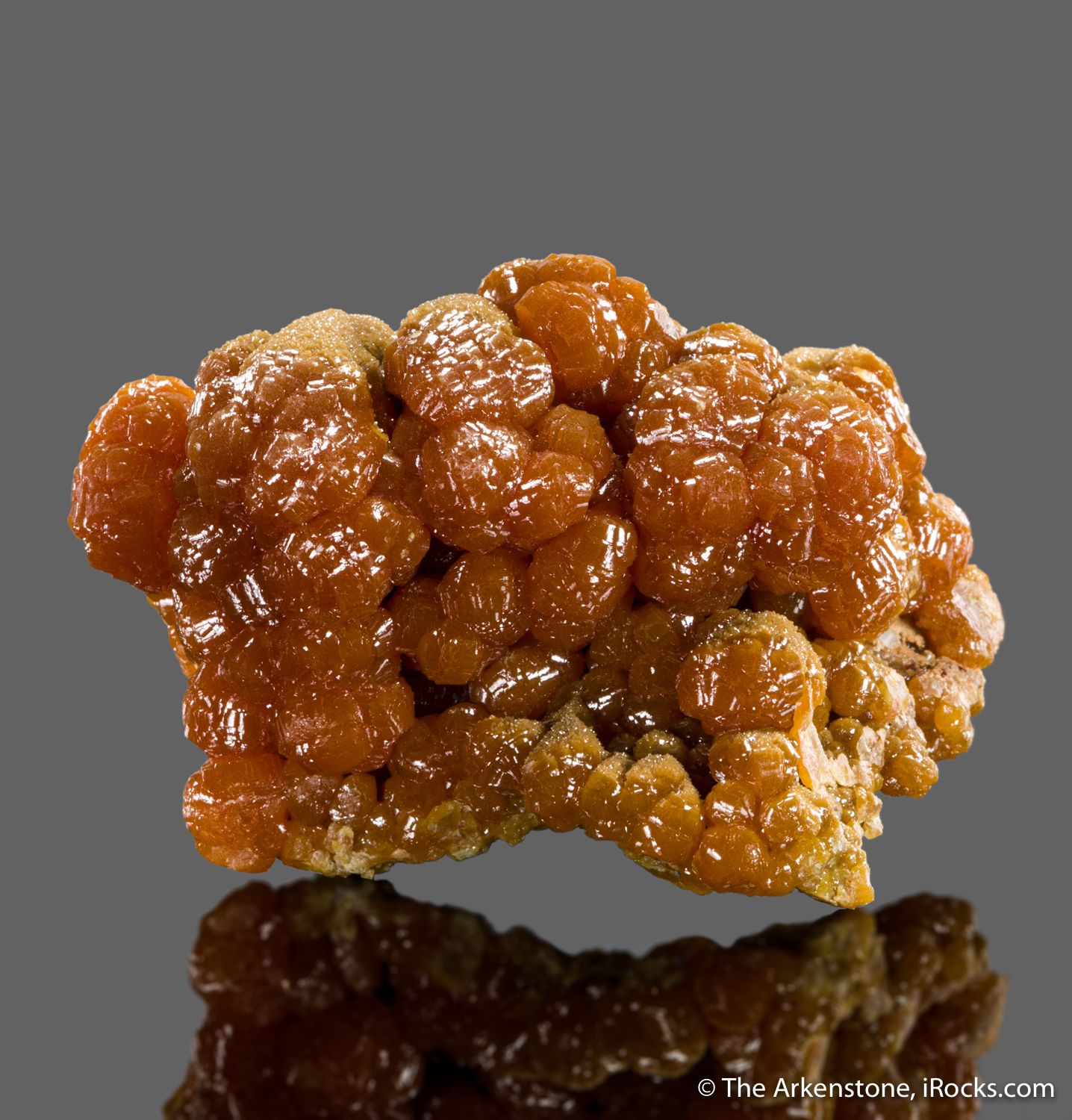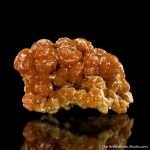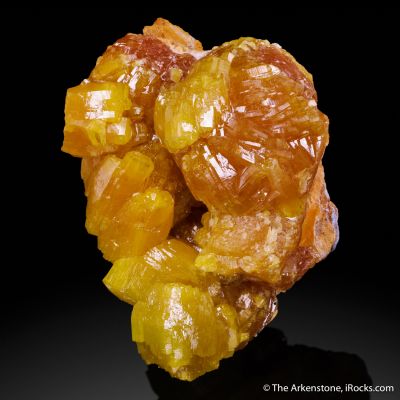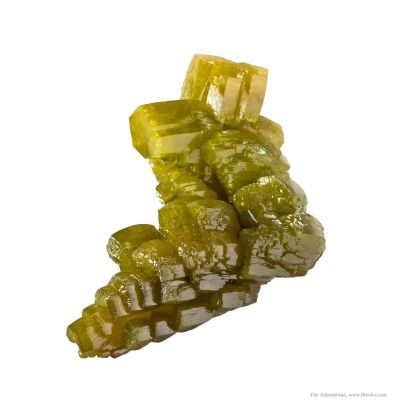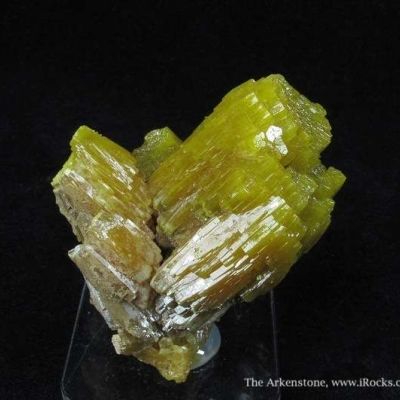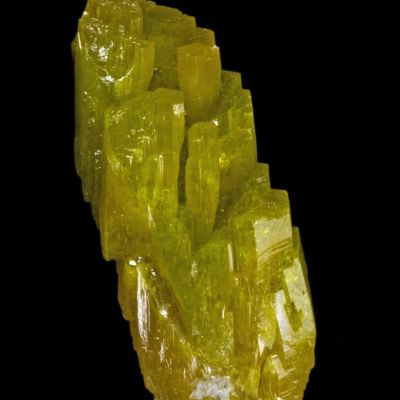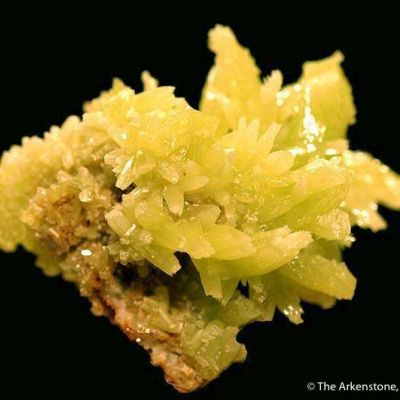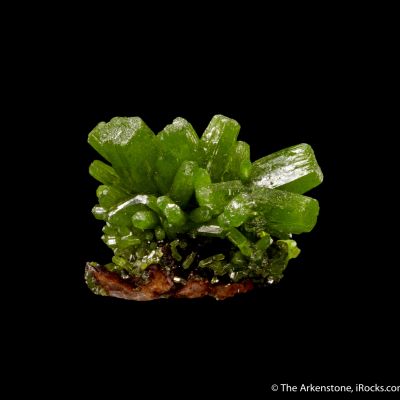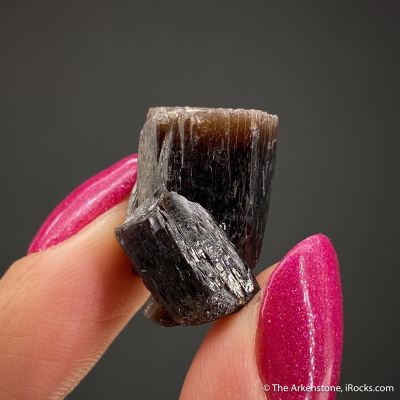- HALP-20
- Pyromorphite
- 9 Level Jersey Vein, Bunker Hill Mine, Kellogg, Idaho, USA
- Small Cabinet, 8.3 x 5.5 x 4.9 cm
- Ex. Jack Halpern
- SOLD
These gorgeous orange pyromorphites with fiery color and great luster came out only once, in this quality, in the incredible find of the early 1980s. The color is due to parts per million of arsenic, and is absolutely distinct for this place and time in this mine - nowhere else comes close for this color in the species. The Bunker Hill Mine is now a superfund site, not only closed but polluted and with no permitted access (although I once went in with the former owner and walked the holes along this Jersey Vein, and got to see where they came out!). They started to come out with the miners, and then Wayne Sorenson got the lock on the further discoveries afterwards and controlled the market when the larger find of yellow and multicolored pieces was hit in later years. These orange examples came first, and early. They were not professionally collected and so very few examples of this size and quality survived without damage. This piece is unusual in that it is not a flat plate, as are so many large examples, but rather a complete independent knob of solid pyromorphite that gives 3-dimensionality and a good top horizon as a display specimen. It has fabulous wet luster and color (never equaled by the arsenian pyromorphites of later finds here). Cannot rave enough about the beauty of this thing...you just have to see in person. Jack purchased this from his good friend and favorite dealer A.L. McGuinness in 1982, right as they were coming out. McGuiness treated Jack righteously and I believe saved something beautiful for him, from each such new find over many years and at fair prices for the day - today, these ex-McGuiness specimens are still among the best in the Halpern collection. One further note, of interest: I was showed while in the mine and walking to the tunnels, that these actually come from workings dating back to the 1890-1905 era! Apparently, there may have been pyro found at the time, but not saved or collected (as it was the ore they were mining for lead) - nobody knows. The specimens were only found after going back to older workings with new mining exploration, nearly a century later. These older workings made by hand tunneling were actually accessed originally from a 19th-century adit much higher up the mountain than the current entry that was originally following silver as well as lead, and the tunnels had been abandoned for years while modern mining pushed ever deeper to get lodes that processed better with machinery. It is a minor miracle that exploration up here came around a second time, and spotted the crystals in the modern age, or we would have had none at all. The Bunker Hill Mine and Smelting Complex, was a large smelter located in Kellogg, Idaho, in the Coeur d'Alene Basin. When built, it was the largest smelting facility in the world at the time (1880s). They were chasing silver and lead, not mineral specimens.
